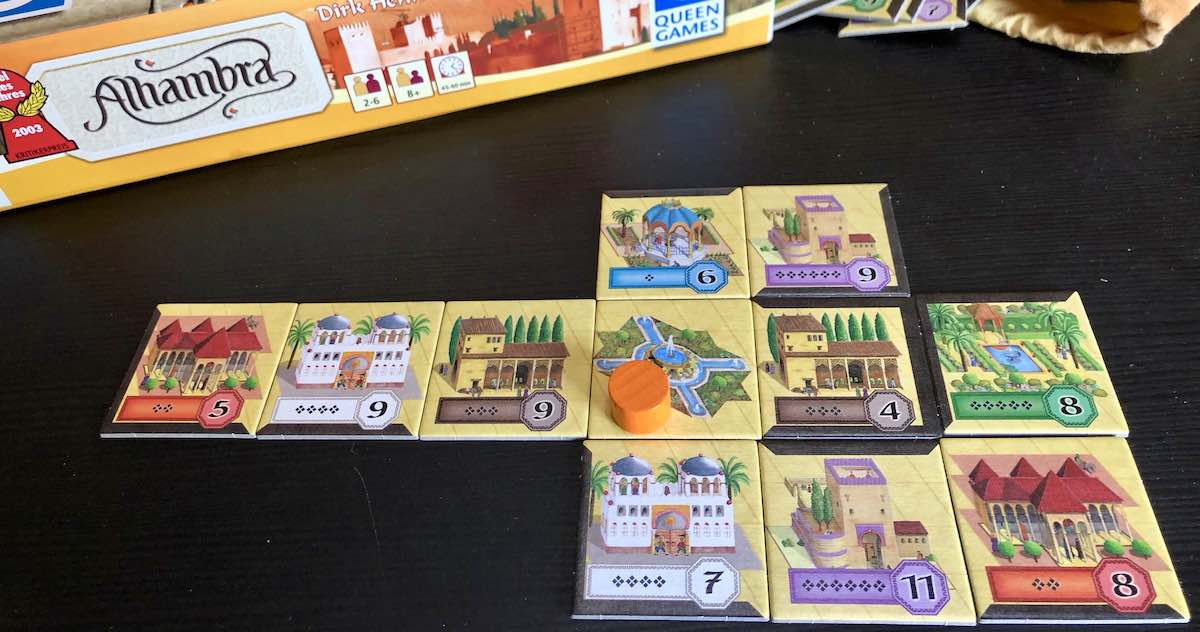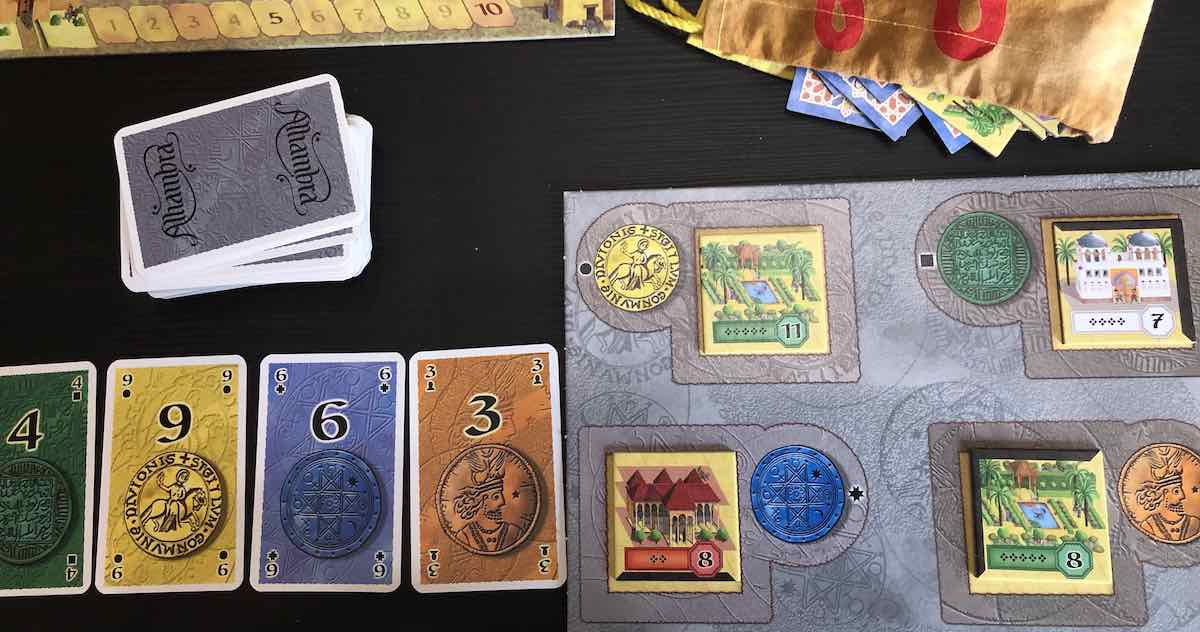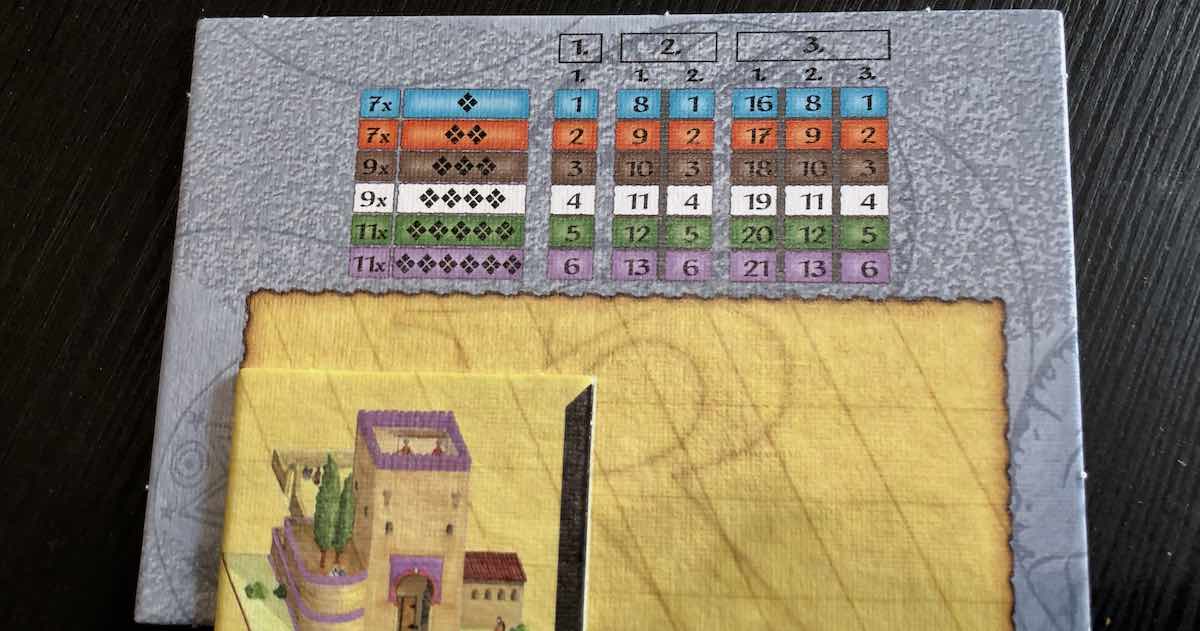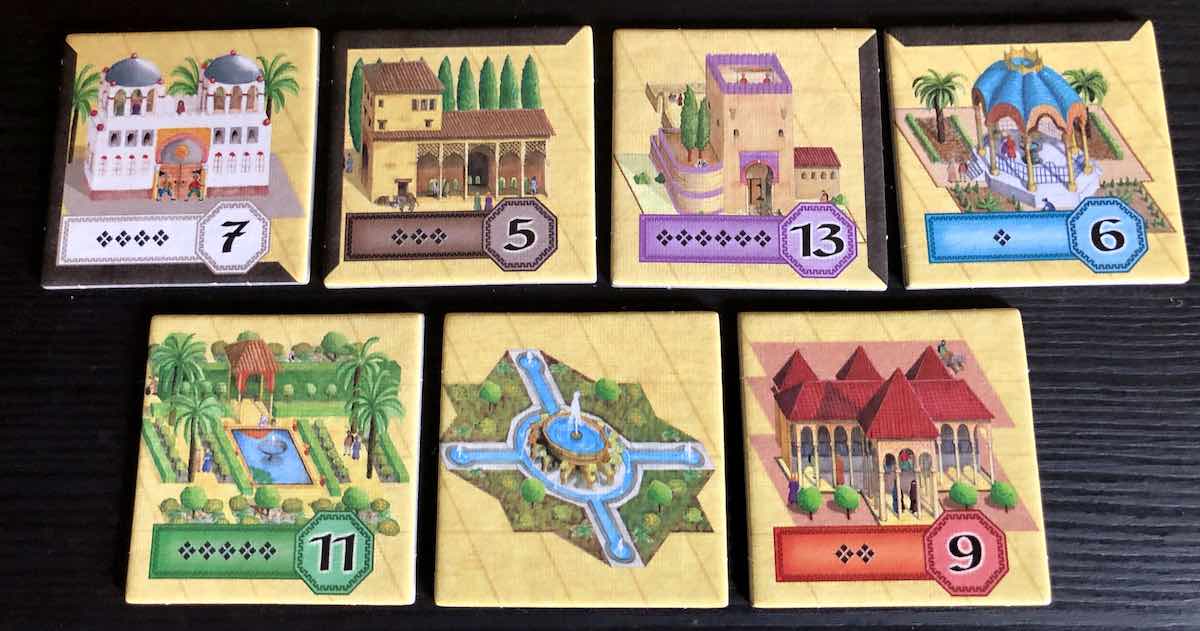[Old Glories] Dirk Henn's Alhambra
What to do when the psychologist recognizes serious elements of the serial player syndrome in his variant "at least one new game per week" that leads some to compulsive purchase with meters of bookcases occupied by boxes, in the best case, used for a evening only others to the obsessive attendance of fairs and demo evenings?
My "shrink" advised me to return to the classics and the new Italian edition came about, the result of the partnership signed just over a year ago between Devir Italia and Queen Games, of Alhambra , a game by Dirk Henn that back in 2003 won the coveted Spiel des Jahres award.
It is an excellent opportunity to evaluate whether 16 years after Alhambra is still in step with the times as are other games that support him in the palmares of the German recognition from Carcassonne, winner in 2001, to Ticket to Ride, game of the year 2004, passing through the 2002 nomination of Puerto Rico which in my very personal Olympus of board games is flanked by the most recent Caylus at the top.
The scenery
Each player, from two to six, is grappling with the construction of the Alhambra complex in Granada and must proceed with the purchase and positioning around the Lion Fountain, the heart of the Moorish walled city, of six types of buildings: Towers, Gardens, Serragli, Pavilions, Porches and Private Apartments. It consists of 54 cards, recognizable by their different colors, which show on the front as well as attractive graphics the minimum purchase price.
In fact, buildings must be purchased with the subtle complication that the different builders require payment in 4 different currencies represented by cards with values from 1 to 9 in different colors.

How to play
Setup is quick; 4 building tiles are extracted and placed on the boxes, one per payment currency, of the market. Each player receives his initial amount of money by extracting from the deck until the value of 20 is reached / exceeded. Whoever has received the least number of cards will be the first player.
Once this phase is concluded, two scoring cards are inserted in the deck in random positions which will determine the moment in which, during the course of the game, points will be awarded on the basis of the game situation; finally, the first four money cards are revealed.
On their turn, each player can perform one of three actions:
Take money . It is possible to take one of the four face up money cards whatever their value or more cards if their total value does not exceed 5.
Buy and place a building tile. The player can acquire a tile by paying a value equal to or greater than the minimum purchase price shown on it using cards of the currency indicated on the building market. If the total of the cards is higher than the price, no remainder is received while if the exact price is paid the right to an additional action is acquired.
The building tile can be positioned in the Alhambra following some simple rules: it must always be adjacent to the complex and the adjacent sides, which may have either free space or a section of the wall, must coincide. Finally, it is necessary at any time to be able to reach, starting from the Lion Fountain, any card present without having to cross a wall or an empty space.
A purchased building does not necessarily have to be played but can be kept on its reserve board for future use.
Change your Alhambra . With this action it is possible to place a card in the reserve board in the Alhambra or remove an existing card and move it between the reserves or exchange a reserve with an already positioned card.
When a player ends his turn, the spaces left free between the money cards and in the building market are occupied so that the next player always has four tiles and four cards available.

How to win
The goal is to collect the points that are assigned, increasingly, in three moments of the game to the players who have the most building tiles of each type / color in their Alhambra.
During the game, when a score card is extracted from the money card deck, the majorities are verified and points are awarded which, on the first occasion, are won only by the most "gifted" player (in case of a tie, the available reward is shared ) while the second two reward the first two.
The game ends when there are no more building tiles enough to complete the quartet on the market; at that point the tiles still present are assigned to whoever has the highest value in the corresponding currency in his hand and the player can place them in his Alhambra following the normal rules.
We then proceed to the last scoring phase which will reward the three players who have the most tiles of each type present in the game.
In all three points assignment phases, each player also receives points equal to the length of the longest external wall of his construction.

Who likes it
Forget about ultra-complex brain-splitting mechanics. Do not look for immersion in the theme: the Alhambra is found in the drawings on the building tiles but even the currencies are identified only by color even if an "ancient" regulation reports Dinars, Dirhams, Crowns and Ducati. If this were not enough, think that the story tells that the original idea involved the construction of a medieval city and that Dirk Henn re-proposed the game eight years later on the streets of Manhattan.
Having said that to avoid unwary approaches, Alhambra is a breath of fresh air. A game that can be explained in no more than ten minutes, is played in no more than an hour and that everyone can enjoy whatever their attitude in front of the board games.
We are faced with a perfect example of what the Anglo-Saxons call "gateway game", a game to be proposed at the first steps in this world, with the great advantage of putting everyone on the same level and not necessarily rewarding the most expert who will, however , satisfy their ambitions by evaluating the best strategies and adapting them with quick decisions to new scenarios.
The luck factor plays its part, and it could not be otherwise in a game with the extraction of cards and cards, but with two or three players the strategic aspect still prevails while as the number increases to the maximum six expected the focus is shifts to the need to choose immediately the best action among those available without much space allowed for planning future moves.

A game that carries its years well
Sixteen years in board games represent a couple of geological eras but, probably due to its positioning as an initiation game, Alhambra does not prove its age. The innovative integration between different mechanics, management and construction of the deck and positioning of the cards, represented its pride at its launch and still keeps it extremely current.
Dirk Henn's game also passed the test of young players who knew nothing about his history and appreciated it for its qualities while the same cannot be said of other great classics such as Catan, now made obsolete by the changing of game habits .

Comments
Post a Comment